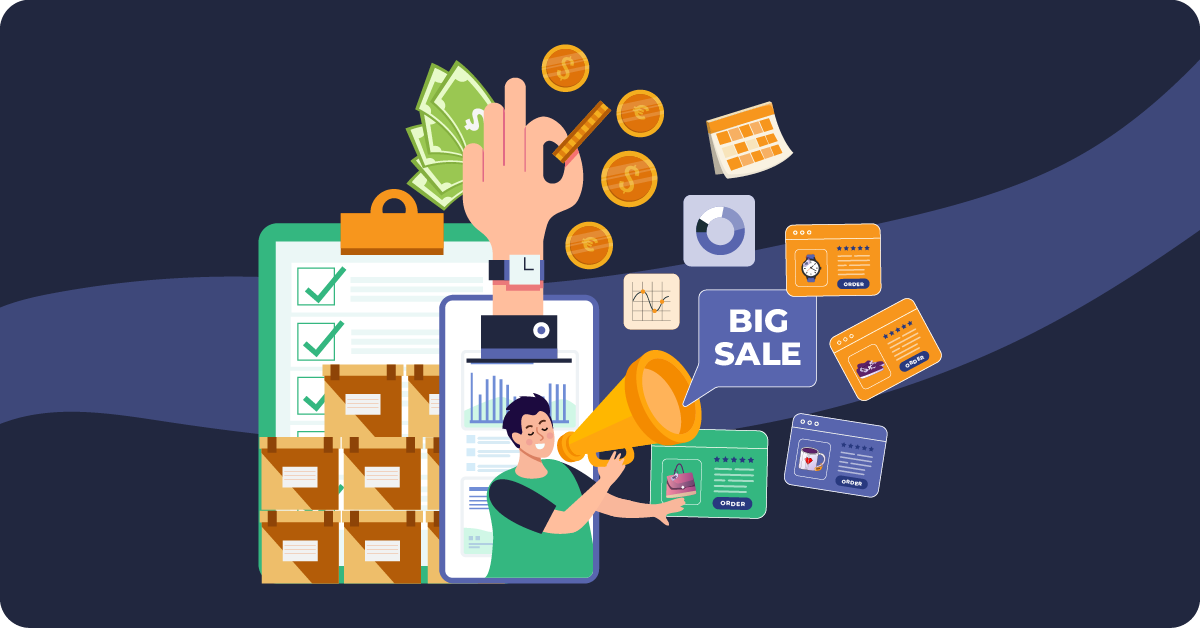AI Amazon Repricer
Boost your Amazon profits and avoid price wars with AI repricing
Amazon Prime Day is a major event on the eCommerce calendar, offering both opportunities and intense competition for sellers on the platform.

Amazon Prime Day is a major event on the eCommerce calendar, offering both opportunities and intense competition for sellers on the platform. If you haven’t finished your Prime Day preparations, there’s still time to enhance key aspects of your business and capitalize on the traffic driven by Amazon Prime Day deals.
In 2024, Prime Day shoppers spent over $12 billion, underscoring the significant potential of this eCommerce event. Many of these high-intent shoppers visit Amazon specifically to find deals across various categories. Here are some last-minute, actionable tips that can help you make the most of this high-traffic event.
Amazon Prime Day has been around for more than a decade, shaping shopper expectations for online deals. It is where buyers are actively searching for Prime Day deals, and your competitors are likely employing every tactic available to secure the Amazon Buy Box. This is where dynamic pricing can provide you with an advantage.
Rather than manually adjusting listing prices, some sellers use AI-driven Amazon repricers. These tools monitor competitor behaviors, pricing history, and adjust prices in real-time, allowing sellers to maintain visibility and maximize profitability without sacrificing too much margin.
Actionable Tip:
You should consider segmenting your product catalog into pricing tiers based on margin, competition, and sales volume. Dynamic repricing is most effective when it is tailored by segment.
Consider activating dynamic pricing ahead of early deals to stay competitive from the start of the Prime Day sales window. Focus on bestsellers and high-velocity SKUs.
However, if you are still manually repricing specific products, ensure you establish minimum and maximum thresholds and identify which products require price flexibility.
Your listing serves as your storefront and must be clean, optimized, and persuasive, especially during a peak event like Prime Day. Here’s a last-minute checklist for optimizing your listing:
Actionable Tip:
Incorporate a sense of urgency into your marketing materials and creatives. Phrases like “Limited Time Offer,” “Prime Day Deal,” or “Ends Soon” can boost conversions.
Do not overlook mobile optimization, as over 70% of Amazon traffic comes from mobile devices. Test your listings on various screen sizes to ensure that important details are easily visible. Additionally, ensure that your offers are clearly marked for Prime members, as this increases trust and conversion.
Creating Amazon product bundles is an excellent strategy for increasing the average order value (AOV) and differentiating yourself from competitors.
Product bundles allow you to group Amazon FBA products without the need to create a new SKU. Tech bundles are especially popular during Prime Day tech deals, making them a smart way to increase perceived value and boost sales. This approach enables you to pair high-performing items with slower-moving products or seasonal accessories.
To put it into perspective, eCommerce sellers have seen their average order value (AOV) increase by 20–30%, as customers tend to spend more per transaction when they perceive greater value through bundled deals.
Actionable Tip:
When creating bundles, choose complementary products that address a common customer need. This encourages Amazon customers to recognize the value in purchasing multiple items at once.
To avoid running out of stock on Amazon Prime Day 2025, it is crucial to synchronize your inventory and establish a backup fulfillment plan. Here are key checkpoints to consider:
Additional Tip:
Check your restock limits and lead times with your third-party logistics (3PL) or warehouse partners to ensure optimal inventory management. Maintain proactive communication with your local suppliers, so you can respond to sudden demand spikes without delays or unexpected stockouts. Always coordinate with them (warehouse partners and suppliers) if you plan to participate in other summer sale events near Prime Day.
If you are running Amazon Ads, focus on maximizing your Return on Advertising Spend (ROAS), especially with other competing sales across the eCommerce space. Here are some actions you can take today:
Actionable Tip:
If you have external traffic strategies in place, such as email marketing or social media, use Amazon Attribution to track them and measure their impact on post-click sales.
Another effective strategy is to use Sponsored Brands to capture attention at the top of the page and direct traffic to curated Prime Day landing pages. Sponsored Brands can help you spotlight exclusive deals by placing them prominently at the top of search results.
To remain competitive, it is essential to monitor your Buy Box status regularly. Being aware in real-time allows you to act quickly if you lose visibility.
This might involve adjusting your prices, updating your inventory, or reviewing your fulfillment settings. While it can be tempting to undercut competitors to regain the Buy Box, aggressive price cutting can significantly impact your profit margins.
Instead of aiming for the absolute lowest price, focus on delivering the best deals while avoiding price wars.
Actionable Tip:
A smarter strategy focuses on consistency, profitability, and algorithm favorability. Amazon’s algorithm generally rewards stable and predictable pricing behavior.
Frequent and erratic price changes—especially during busy periods like Prime Day—can negatively affect your Buy Box eligibility. Instead, focus on strategic, dynamic price adjustments that strike a balance between competitiveness and long-term profitability.
Automating tasks such as pricing, alerts, and reporting can help you focus on other essential aspects of your Amazon business. For instance, Amazon sellers who use automated repricer tools often experience fewer pricing errors and a more consistent retention of the Buy Box during high-volume periods.
Actionable Tip:
Create customized pricing strategies for your bestsellers, seasonal products, and overstocked inventory to enhance both sales and profitability. Additionally, to save time and minimize errors, consider automating key tasks such as monitoring ad performance, setting up inventory alerts, implementing dynamic repricing, and responding to customer feedback.
High order volume during Amazon Prime Day often leads to an increase in customer inquiries and returns. To effectively manage this, stay proactive by closely monitoring messages and preparing responses in advance. Here are some things to consider to improve customer service during Prime Day sales:
Actionable Tip:
Create a temporary FAQ section on your Amazon Storefront to address common concerns such as return policies, shipping timelines, and product care instructions. This proactive approach can help reduce customer inquiries and significantly lower the number of incoming messages during Amazon Prime Day 2025.
Your Amazon sales do not stop when Prime Day ends; many customers continue to shop for deals in the days that follow. Here’s what you can do to take advantage of this consumer behavior.
Actionable Tip:
Create remarketing campaigns using Sponsored Display Ads to re-engage visitors who browsed during Amazon Prime Day 2025 but did not make a purchase.
If you feel like you’re falling behind, you’re not alone. Some sellers enhance their Prime Day performance in the final 72 hours. Focus on high-impact actions, including pricing, listing quality, ads, inventory, and automation.
Whether you are using advanced tools or relying on manual processes, what matters most is how you execute your strategy. With just a few adjustments, you can still secure placement among the best Prime Day deals shoppers are looking for, and turn Prime Day 2025 into a significant success for your business.

Set up in minutes with the help of our customer success team, or reach out to our sales team for any questions. Start your 15-day free trial—no credit card needed!